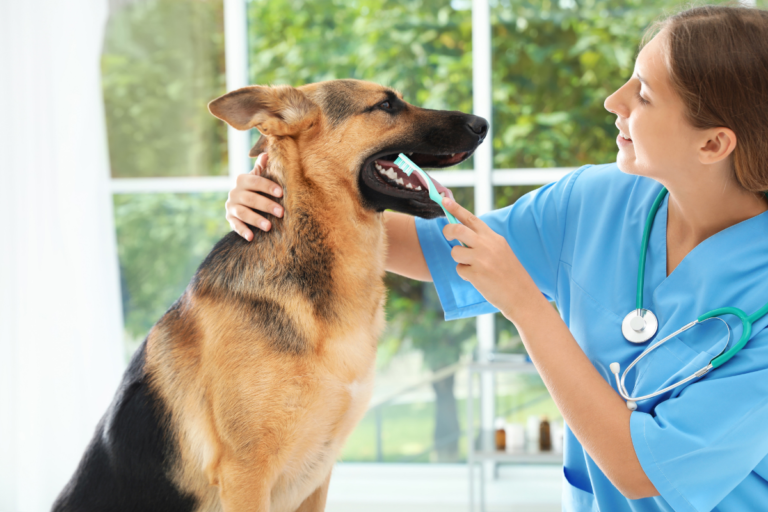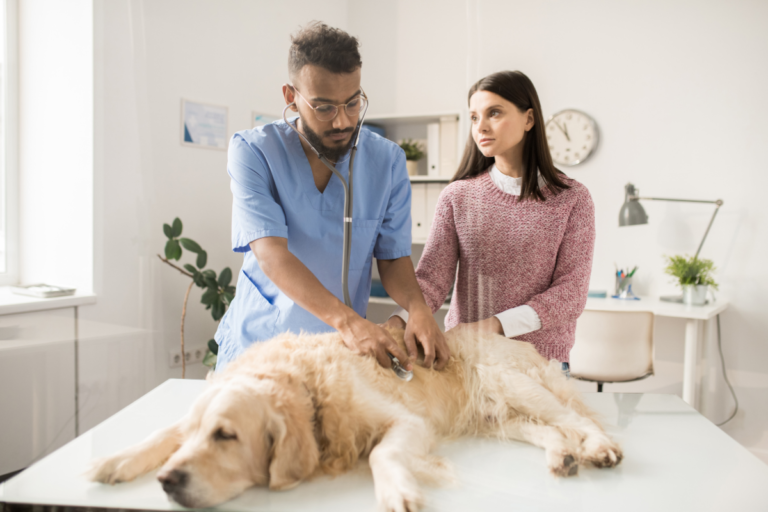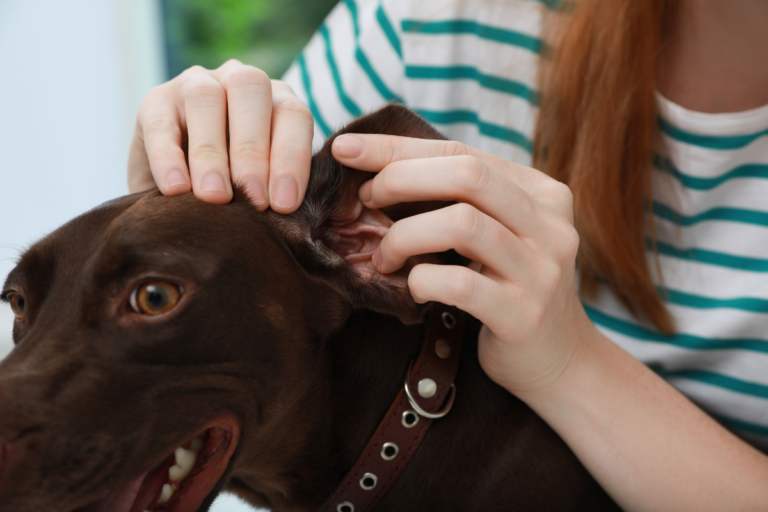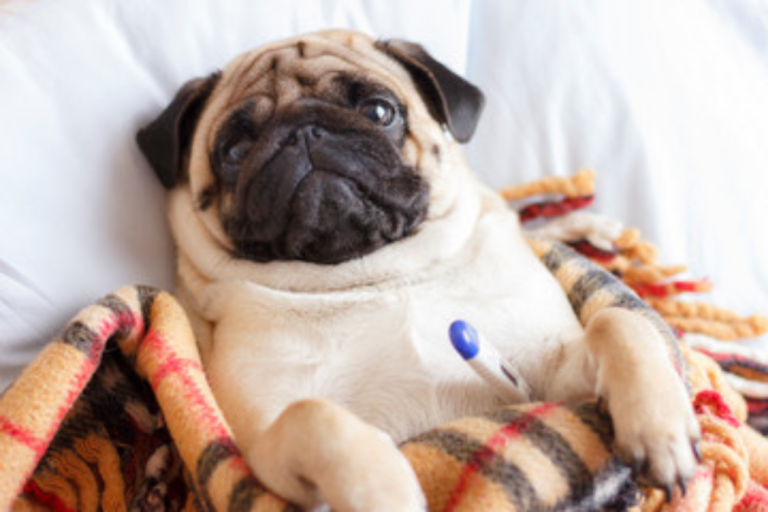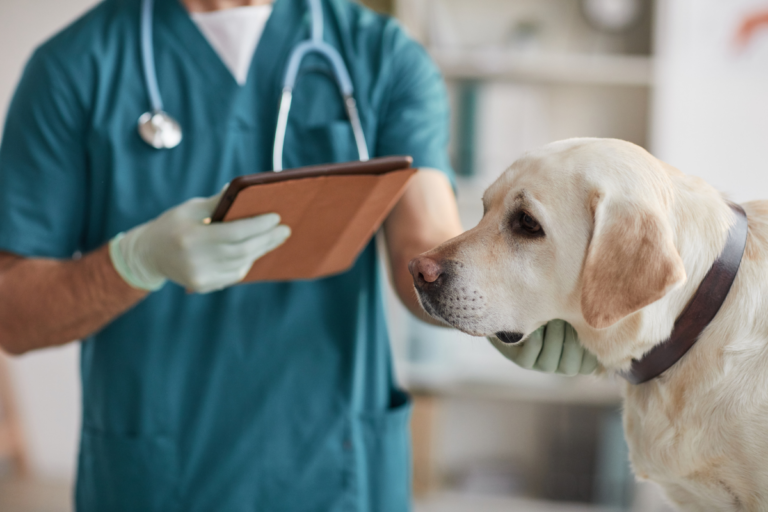Our Canine Champions: Conquering German Shepherd Hip Dysplasia
Understanding Hip Dysplasia in Dogs
If you’re the kind of dog owner who wants nothing but the best for your pup, getting clued up on hip dysplasia is worth your time. It’s more common than you might think, and knowing how to handle it can make all the difference in your furry friend’s life.
Overview of Canine Hip Dysplasia
So, what’s the deal with canine hip dysplasia? It’s mostly a worry for big dogs like your classic Labs, those sleek German Shepherds, or those drooly Saint Bernards, but truth is, any dog can be affected. We’re talking about a genetic hiccup that messes with the hip joint, causing it to be all loosey-goosey, wobbly, and painful—hurts us just to think about it.
Blame genes for most of it, but don’t count out things like diet and how the dog’s been living. Dogs aren’t usually born with this problem—it’s during their growth spurts that things go sideways (Texas A&M College of Veterinary Medicine & Biomedical Sciences).
Symptoms and Diagnosis
Now, how do you know your pup’s got hip dysplasia? Here’s what to watch for:
- Limping, especially in the back legs
- Wincing or yelping when they move
- His back-end muscles getting a bit puny
- When they run, they kind of look like a bunny
- Acting lazy about getting up or doing things dogs love, like jumping or playing fetch
- Slouchy energy levels compared to their furry pals (Texas A&M College of Veterinary Medicine & Biomedical Sciences)
These symptoms can sneak up when they’re still pups or wait until they’re more seasoned. Catching it early is your best bet for keeping your dog feeling their best.
| Symptom | Frequency |
|---|---|
| Limping | Regular |
| Wincing during movement | Regular |
| Muscle loss | Gets bad as it progresses |
| Bouncy run | Sometimes |
| Too chill to leap | Happens pretty often |
| Sluggish energy levels | Regular |
The vet’s go-to for pinning down hip dysplasia? An X-ray. This can show how the hip fits in the socket (or doesn’t) and point out any trouble. If your dog’s just starting to show signs and arthritis hasn’t set in yet, surgery like a triple pelvic osteotomy (fancy term, huh?) might help fix the problem (Texas A&M College of Veterinary Medicine & Biomedical Sciences).
Figuring things out early means you can take steps that make life easier for both you and your pup. Want to learn about other canine health stuff? Check out our pages on dog diseases and which breeds are the healthiest.
Focus on German Shepherds
Hey there, fellow German Shepherd enthusiasts! When it comes to these majestic dogs, we gotta talk about hip dysplasia. Knowing what makes this condition tick – both genetic and lifestyle factors – can help us better take care of our furry pals.
Predisposition in German Shepherds
Our German Shepherds are famous for their loyalty and smarts, but they’re also pretty likely to develop hip dysplasia. What’s that, you ask? It’s a problem where the hip joints don’t fit right in pups that are still sprouting up. When the joints are loose, it can lead to pain and eventually arthritis — ouch! (Source)
Catching this early is a game-changer. Look out for signs like them struggling to get up, waddling stairs, or not wanting to jump as much as they used to. Remember, when in doubt, have a chat with your vet for guidance. (Source)
Genetic and Environmental Factors
Genetics have quite the say in whether a Shepherd’s hips turn out okay or not. This condition involves many genes, making things rather complicated. (Source) While some dogs might be more prone, environmental factors can also tip the scale.
In the States, folks have set up the PennHIP program to keep an eye on this, hoping to save future pups through careful breeding.
| What Affects Hip Dysplasia | What’s It All About? |
|---|---|
| Genetic Factors | It’s not just one gene, several play a part |
| Lifestyle Factors | Poor nutrition, lack of playtime, growing too fast |
Lifestyle choices – what our dogs eat, how much they exercise, and keeping an eye on their growth – are all pieces of this puzzle. Smart breeding and regular vet visits are big helpers in lowering the odds.
And in case you’re interested, peep into other health hiccups Shepherds might face like degenerative myelopathy or canine myasthenia gravis.
Being in the know and taking action when needed can seriously boost your German Shepherd’s days. By showing a little extra love and attention, we can help our loyal companions run around with joy and keep that playful spirit alive!
Treatment Options
We’re talking about handling hip dysplasia in our lovable German Shepherds and believe me, it’s no walk in the park. You’ve got two big paths to choose from—surgery or the more laid-back approach with non-surgical management. What’s right depends on how badly our pups’ hips are acting up and what fits them best.
Surgical Interventions
If our dog’s hips are giving them a real tough time, and other methods ain’t working, surgery might be the answer. You’ve got a few choices here: Triple Pelvic Osteotomy (TPO), Femoral Head Ostectomy (FHO), and Total Hip Replacement (THR).
-
Triple Pelvic Osteotomy (TPO): Think of this like getting a tune-up for young dogs before arthritis sneaks up on them. The doc rotates those pelvic bones to help the hips work better. It’s like giving them a new lease on life with less wobble and more wag.
-
Femoral Head Ostectomy (FHO): This surgery ditches the head of the femur to cut out that annoying bone-on-bone grinding. Yeah, it might not make Fido run like Lightning McQueen, but it sure as heck makes things less ouchy, and it’s not gonna break the bank like THR.
-
Total Hip Replacement (THR): All in, folks. We’re talkin’ the hip gets a full makeover. THR is perfect for our older pals or those hit hard by dysplasia, turning back the clock on their hips so they can chase that tennis ball like they used to.
| Surgery | Best for | Pocket Hit (per side) |
|---|---|---|
| TPO | Young pups minus osteoarthritis troubles | $1,000 – $3,000 |
| FHO | Dogs over a year with rough hip issues | $1,000 – $3,000 |
| THR | Old timers or those with severe trouble | $3,500 – $7,000 |
Helpful bits and bobs:
Non-Surgical Management
Going down the non-surgery route? No worries, we’re here for it! This road is all about dodging pain and keeping those hips moving smoothly, especially when surgery’s off the table.
-
Weight Management: Our Shepherds need to watch their kibble, or that extra fluff will stress those joints out even more. More tips in our fab weight guide.
-
Physical Therapy: It’s gym time for our four-legged pals. By beefing up muscle around the hips, we’re giving joints a break. Hydrotherapy’s like taking a dip in a magic healing pool.
-
Medications: Pop some pills—anti-inflammatory ones—or sprinkle supplements to help with the creaks and aches. Glucosamine and chondroitin sulfate are the words on the street.
-
Assistive Devices: Ramps, harnesses, and fancy beds—they’re not just for the high rollers. These nifty gadgets help take the load off those aching hips so our buddies can chill with ease.
Sneak peeks into more doggy dilemmas:
| Management Method | What It’s All About |
|---|---|
| Watch That Waistline | Keep ’em trim for happy hips |
| Doggy Workouts | Flex those muscles to ease movement |
| Pills & Potions | Soothe the aches and keep joints jiving |
| Helpers & Gizmos | Cushy beds and easy-access ramps |
By getting the scoop on these treatment options, we’re all set to choose what’s best for making sure our German Shepherds live their best life. Sniff around more about health hints on kidney disease basics and doggie health dramas.
Preventive Measures
Hip Dysplasia Prevention
Keeping our German Shepherds healthy and free from hip dysplasia takes a bit of teamwork and good planning. Here’s how we tackle this issue with a smart mix of food, movement, and regular vet check-ups.
Diet and Weight Management
Feed ’em right, folks! Packing on extra pounds can make hip dysplasia worse, so keep an eye on those portions. Balanced meals loaded with good stuff but without going overboard will keep our furry pals at an ideal weight.
Appropriate Exercise
Exercise is the good medicine here. But remember, not all workouts are created equal. Think low-impact like swimming or a nice stroll, something that’ll strengthen muscles without making those joints cry uncle. Let’s leave the high-flying acrobatics to the experts—better keep those jumpy games to a minimum.
Medical Monitoring and Supplements
Regular check-ups with the vet aren’t just for getting out of the house. They help catch hip dysplasia early on. While we’re there, it might be worth peeking into joint-friendly supplements like glucosamine and chondroitin. These could act as insurance for healthier joints and might just stall the sneaky symptoms.
Breeding Programs
When it comes to beating hip dysplasia at its own game, careful breeding takes the lead. We need breeders with an eye for picking the best pups.
Genetic Screening
Stateside pet folks know all about PennHIP. It’s a program that checks hip traits in dogs and gives breeders the scoop on which pairings might lessen hip dysplasia (UFAW).
| Program | Country | Key Feature |
|---|---|---|
| PennHIP | USA | Measures hip joint laxity |
Selective Breeding
Picking pups with healthy hips is a long game, but it pays off. Even though we don’t have a foolproof test for carriers yet, sticking to healthy doggos for breeding is our best bet for now.
Breeding Practices
- Mate Selection: Go for dogs with hips that score better than average.
- Record Keeping: Jot down everything about their health like an over-attentive scout.
- Environmental Enrichment: Raise those pups in happy, healthy surroundings to keep any extra risks at bay.
Working together to cut down hip dysplasia in our German Shepherds isn’t just about easing symptoms—it’s about giving our four-legged friends their best life. For more tips on keeping pups in top shape, take a gander at our articles on German shepherd health problems and healthy hounds.
Cost Considerations
So, you’re a proud German Shepherd parent, huh? Well, along with that wagging tail and those loving eyes, there’s a little trouble that might sneak in—hip dysplasia. Before you panic, let’s chat financials about the treatments and alternatives that might just be the ticket.
Treatment Expenses
Hip dysplasia is kinda like that friend who never leaves—always demanding attention and care. For our furry pals, sometimes surgery is the hot ticket solution for those really bad cases. But, guess what? It ain’t cheap. They say it costs a pretty penny, and here’s why:
| Surgical Procedure | Cost (per hip) |
|---|---|
| Triple Pelvic Osteotomy (TPO) | $1,000 – $3,000 |
| Femoral Head Osteotomy (FHO) | $1,000 – $3,000 |
| Juvenile Pubic Symphysiodesis (JPS) | $1,000 – $3,000 |
| Total Hip Replacement (THR) | $3,500 – $7,000 |
(Source: OrthoDog)
But, don’t reach for those tissues just yet. If surgery sounds scarier than your pup’s howling during a full moon, you can always think non-surgical. Picture those options, like pain relief medication, magic joint potions—we mean, supplements—and hip braces, all bringing those vet bill monsters back into a sane realm.
Alternative Therapies
Surgery not really your jam? Thank goodness there are other solutions out there. Many folks are waving their paws towards alternative therapies instead, trying to make their pups comfy without the big bucks. Take a peek at some options:
| Alternative Therapy | Estimated Cost |
|---|---|
| Joint Supplements (monthly) | $25 – $50 |
| Painkillers (monthly) | $30 – $100 |
| Hip Brace | $50 – $200 |
| Physiotherapy (per session) | $50 – $100 |
| Hydrotherapy (per session) | $50 – $100 |
| Wheelchair | $200 – $600 |
| Stem Cell Therapy | $2,000 – $3,000 |
| Canine Massage Therapy (per session) | $30 – $60 |
| Acupuncture (per session) | $50 – $100 |
(Data source: Zoomadog)
We know, we know—picking the right care for your four-legged buddy can feel like climbing Mount Everest with sneakers on. But once you weigh up those dollar signs with the tail wags, it’s all about making the best choice for both your wallet and your pet’s happiness. Curious for more scoop on hip dysplasia and other furball ailments? Check out our other articles on dog diseases. And while you’re at it, give your dog an extra scratch behind the ears from us!
Additional Conditions
Besides the all-too-famous German Shepherd hip troubles, a few other health hiccups can trip up our furry friends. Let’s chat about two big ones: Degenerative Myelopathy and Canine Myasthenia Gravis.
Degenerative Myelopathy
This naughty little disorder messes with the nerves in the spine, popping up mostly in German Shepherds from school age to high school age. Our pals might start moving like they’ve had too many treats—wobbly, unsteady, and struggling with basic moves like standing and hopping. And, before you know it, it could make them paralyzed in the back end.
Symptoms Include:
- Battling to stand
- Wobbling back legs
- Struggling with hopping
- Turtle-like slow coordination
| Symptom | What It Means |
|---|---|
| Difficulty Rising | Getting up from lying down is a challenge |
| Hind Limb Weakness | Back legs lose their oomph |
| Trouble Jumping | Jumping becomes a game of nope |
| Loss of Coordination | Walking turns into a wobbly dance |
For more on illnesses like degenerative myelopathy, check out our helpful guide on dog diseases and symptoms.
Canine Myasthenia Gravis
Imagine this—a rare bug in the system that messes up how nerves and muscles chat with each other, leading to our pups feeling tuckered out after the slightest thing. Unlike hip struggles, this one likes to show off on their cute little faces instead of the rear.
Symptoms Include:
- Slack in facial muscles
- Droopy eyelids
- Tired after slight movement
- Eating is a workout
| Symptom | What It Means |
|---|---|
| Facial Muscle Weakness | Face muscles calling in sick |
| Drooping Eyelids | Eyelids joining the slumber party |
| Fatigue with Activity | Feeling like a nap after any little thing |
| Difficulty Swallowing | Getting food down the hatch is a chore |
Interested in rare conditions like Canine Myasthenia Gravis? Explore our piece on dog heart disease—it’s a must-read for dog lovers.
Keeping an eye out and staying informed means our four-legged buddies get to stay wagging and happy. For more on keeping your furball healthy, bark over to our guide on dog diseases.

